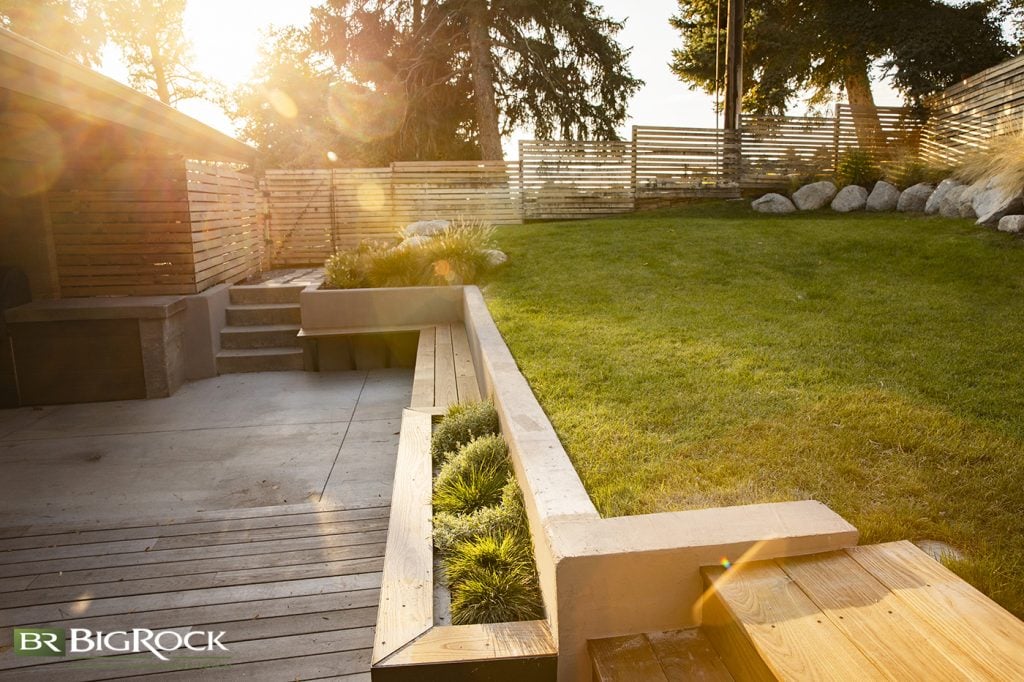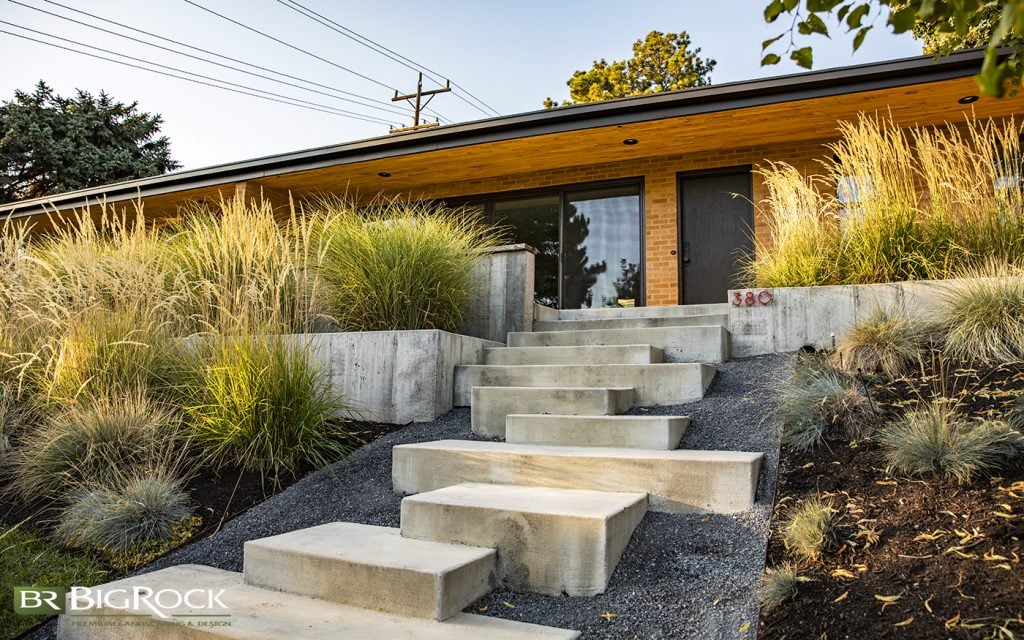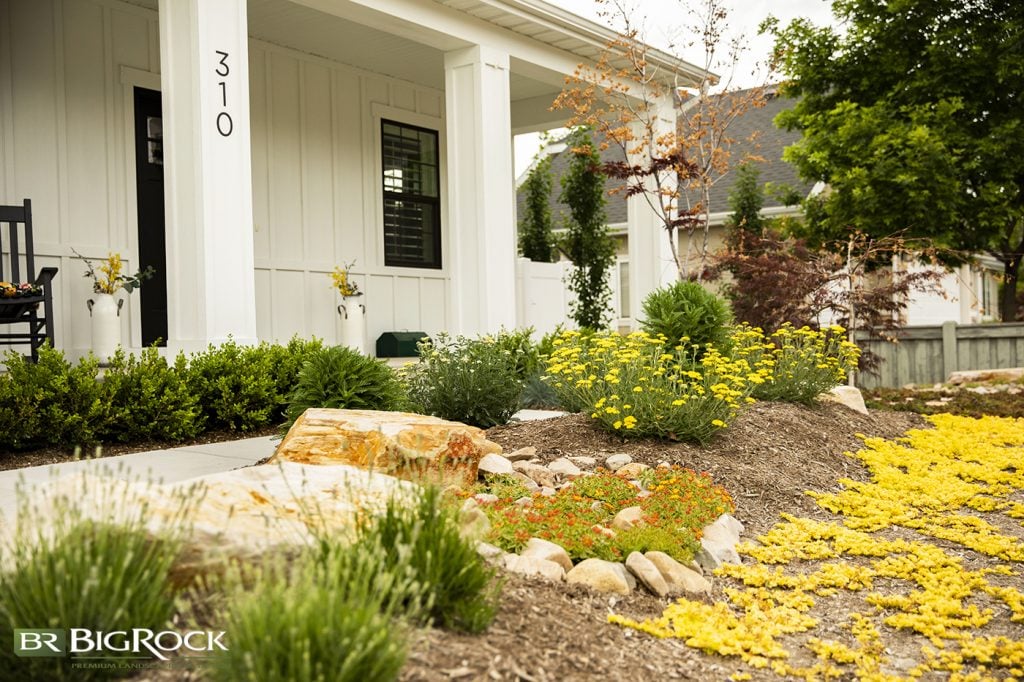As Utahns, we are heavily dependent on the water cycle. Yes, snow is important for winter sports and recreation, but the amount of powder we get also impacts the other seasons in a big way. If Mother Nature gets stingy with the snow or rainfall, our beloved desert State freefalls into a drought. Unfortunately, that happens fairly often. We first see the effects of drought on yards and other cultivated green spaces, which can cause a lot of stress for homeowners. If you’re new to the area, or just unsure how to care for a yard during drought, then you’ll appreciate our drought tips for yard care. This isn’t our first drought season, and it certainly won’t be our last, but after learning more about how to tackle lawn care during drought season, you won’t panic next time a drought rolls around.
What You Need To Know About The Drought And Your Yard
When an area is experiencing drought, it brings up a lot of questions for homeowners about the best way to care for a yard during a dry season. But before we get into specific lawn tips for drought, let’s go over some preliminary signs you can look for to catch the effects of drought on a yard before it’s too late.
Signs Your Yard Is Facing Drought Stress:
Wilting
Early on in a drought, leaves on plants and trees may start to wilt or roll their leaves later in the day. While they may appear perky and normal in the fresh morning dew, as they deal with the effects of the day’s heat, they will begin to sag and look lifeless. This is just a little warning sign, and you can easily bring these plants back from the brink. If you notice leaves that are wilted in the morning, then your plant is sending you a desperate S.O.S. and things are about to take a turn for the worse. Your plants will need some dedicated attention at this point.
LEARN: Xeriscaping Ideas For Your Utah Home
Closed Or Sagging Flowers
Have you ever had a day when you “can’t even?” Plants feel that way too sometimes. Closed or sagging flowers are a sign that your plant is parched. When this happens, the plant will sacrifice blooms in an effort to conserve water and energy to keep the body of the plant alive. It’s kind of like when your fingers get cold when you’ve been outside too long in winter. Your body wants to keep your organs warm, so it doesn’t mind sacrificing a digit or two.
Bluish Gray Grass
One of the first signs of a drought stressed lawn is a change in the general color of the grass. It will start to take on a bluish gray color, instead of the vibrant green that is typical.
Footprints In Your Lawn
If you walk across your lawn and look back to see your footsteps still showing, then your lawn is likely experiencing drought stress. Footprints in the grass are another early sign of a drought stressed lawn.
READ MORE: Our Yard Checklist For A Drought
Brown Blades
As a drought progresses, your lawn may turn brown. Just like with closed or sagging flowers, if you notice your lawn turning brown, it’s likely conserving energy in an attempt to keep the crown, or base, of the grass alive. The crown is what produces the blade, and as long as it is alive, your grass blades will continue to grow year after year. The blade goes dormant in times of drought, or when the weather gets too hot or too cold. This is a perfectly normal reaction, but it is also an advanced sign of stress.
Deep Roots
When you pull up a chunk of grass and notice the roots are long, that could be the result of drought. If water is hard to find, the roots will grow longer in an attempt to reach it. Deep roots are, therefore, a sign of drought stress.
RELATED: Our Favorite Drought Resistant Landscaping Ideas
Bare Spots Or Dead Branches
As drought progresses, you may start to see bare spots in your lawn. Once a yard gets to this point, it may be past the point of no return. Likewise, trees with dry, brittle branches are dying, and will need drastic measures to be salvaged.

Tips For Saving Your Lawn During A Drought
People have been known to go to extreme lengths to help their drought stressed lawn. We’ve even seen people go so far as to paint their grass green. (Spoiler Alert: We do NOT recommend painting your grass green, even in a drought.) If you want to lessen the effects of drought on yard landscaping, try any or all of the following lawn tips for drought.
Sharpen Your Mower Blade
Have you ever tried to cut a piece of paper with a dull pair of scissors? Not only is it a frustrating experience, but it can really chew up the paper. The same is true with a dull lawn mower blade. Instead of giving a clean cut, a dull blade will tear the grass and cause it to use more water and energy to repair itself.
Mow High
When water supply is short, set your mower blade to 2.5-4 inches high. This simple tip for lawn care during droughts helps the soil stay cooler and retain moisture. Mowing high also helps the root system develop and strengthen itself.
Mulch Instead Of Bagging
Bagging up your grass may look nicer, but mulching is better for your lawn, especially during a drought. Letting your grass clippings go back into the lawn helps the soil stay cool and retain moisture.
Don’t Skip the Fertilizer
Some people will recommend that you skip fertilizing during a drought, but we think that is a mistake. Your plants and trees still need nutrients, so feed your plants with high-nitrogen fertilizer during a drought. You still need to make sure your plants are getting what they need, even when water is limited.
Let It Go Dormant
In times of drought, extreme heat, or cold, your lawn will turn brown and go dormant. It’s not really dead, so much as resting. It will come back to life when the temperatures change, or you’re able to water it properly. In extreme drought conditions, sometimes you just have to do your part to conserve water resources and let it go dormant for a time.
Determine How Much Water Your Lawn Needs
Most homeowners are overwatering their lawns. How long can grass go without water? The answer may surprise you. Lawns begin to go dormant and turn brown after two or three weeks without water. It takes four to six weeks for them to start to die.
In non-drought 70-80 degree weather conditions, you should be watering your lawn 2-3 times a week for 15-25 minutes if you have pop-up sprayer head sprinklers, or 30-40 minutes if you have rotary style heads. You should be getting ½ inch of water at each watering station.
If the weather is 90-100 degrees, you should water 3-4 times a week. Each watering station should be set to ½ inch to ¾ inches of water. This equates to about 25-35 minutes for pop-up sprayers, and 40-60 minutes for rotary sprinklers.
Of course, it’s not always possible to give your lawn as much water as it needs when there is a drought. Do your best to stick as close as possible to the water guides. Try to water deeply and infrequently, but be mindful of water restrictions. After all, nobody likes a water hog.

Tips For Saving Your Shrubs And Plants During A Drought
Now that you know the basics of lawn care during drought season, let’s talk about plants, trees, and shrubs. Here are a few plant tips for drought season that may come in handy.
Use Water Wise And Native Plants
Utah is a desert state, and as such, many of its native plants are water wise. Instead of filling your yard with whatever is on sale at the big box garden store, utilize the native plants that naturally thrive in low water conditions. Try incorporating as many of these into your design as possible. If you want some inspiration on how to do that, Big Rock Landscaping has lots of unique ideas in their residential landscaping portfolio.
Install A Smart Sprinkler
ET (evapotranspiration) sensors gather information about the evaporation from the soil, transpiration by plant materials, as well as wind and rain forecasting from local weather sources to make irrigation run-time adjustments so that your landscape only receives the exact amount of water it needs. Make sure you are utilizing different zones. Shady areas need less water, less shady areas need more.
Add Mulch
That brown stuff you add to your flower beds does more than just make it look pretty. Mulch helps your soil stay cool and moist, which really comes in handy in times of drought.
Xeriscape
One of the best ways to conserve water is to not use it. Xeriscaping all or part of your yard can save a lot of water. This purposeful form of water conservation looks great in times of drought and times of monsoon. But when there is a drought, you’ll be able to sit back and enjoy your yard, while your neighbors panic and wonder how to save their plants. That said, our philosophy is that you can keep what you love about your landscaping, even in a drought, if you are watering correctly.
Collect Rainwater
While collecting rainwater to hydrate your lawn may not be an option, it’s a great way to give a little extra love to your plants. Whether you use a formal rainwater collection system, or some buckets and pails, gathering every little bit can help. Then you can use that water to give your plants a little extra soak when needed.
Water The Soil Directly
As much fun as it is to use the hose to fan a stream of water over your plants, or aim the sprinklers at your plants and trees so you don’t have to worry about it, this generally wastes water. Using a drip irrigation system, or watering the soil directly by hand is the most effective way to get the water where it needs to be without too much waste.
Water Slowly
Have you ever noticed what happens when you turn the water on full blast on the soil? It causes erosion to happen as the top layer of dirt gets carried away in the runoff. This erosion gets even worse when the soil is dry. Watering slowly and deliberately will help prevent runoff.
Avoid Heavy Pruning
Pruning isn’t just meant to clean up trees and shrubs, it’s meant to promote growth, too. That’s why you should avoid pruning during a drought. You want your plants to focus their energy on maintaining what they already have, not on trying to grow new offshoots.
Prioritize Trees, Perennials, And Shrubs
Your lawn can go longer without water than your trees, perennials, and shrubs can. So if you have to decide between watering your lawn and watering these other plants, choose the trees, perennials, and shrubs. Give them a deep watering once a week to help soak the ground and give the roots access to the moisture they need.

Have More Drought Questions About Your Yard?
If you have more questions about the effects of drought on your yard, we’re here to help. Big Rock Landscaping offers the best landscaping services to help you design your perfect yard, make your yard more drought friendly, or maintain what you’ve already got. We are a full service landscaping company that has spent many years designing yards for the harsh Utah climate. We understand what it takes to create beautiful outdoor spaces, and we can help you keep them looking beautiful. Even in a drought. Contact us today to see how we can help you with your landscaping needs.

